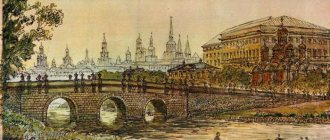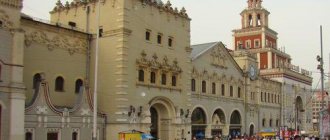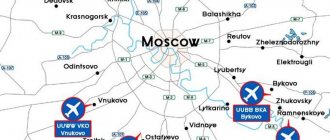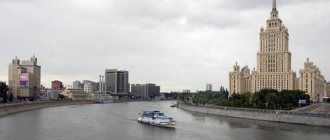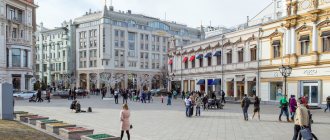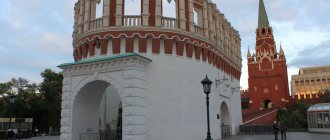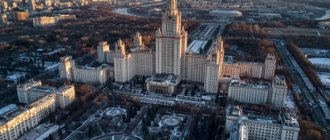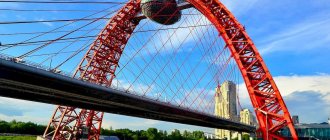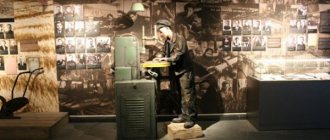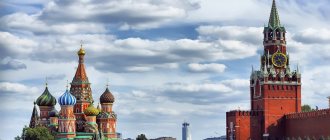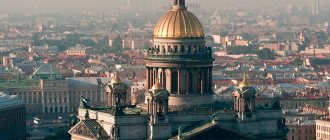Moscow river
Moscow River
Many people associate the Moscow River with the capital of the same name, but in reality it is an independent water artery that begins its journey many kilometers from the metropolis. The source of the Moscow River is in the Smolensk region. Wetland and uninhabited area. The mouth of the Moscow River is near the beautiful city of Kolomna.
The first settlements within the modern capital were formed in the Stone Age. This was confirmed by archaeological excavations in Khamovniki, Tushino, Fili, Shchukino, Serebryany Bor, and on Vorobyovy Gory. Now the districts are part of the metropolis, but then they were separate villages. Residents were engaged in farming and fishing.
Historians prove that it was in the river valley in the 8th century that the first Slavs began to settle. This is confirmed by the mounds on the banks. Even then, the water artery was navigable, was an important economic facility, had a connection with the Volga and Don, and provided communication between cities from Smolensk to Nizhny Novgorod.
Today the Moscow River is a cultural part of the capital. The embankments are equipped with walking areas, pedestrian and bicycle paths. Gorky Park stretches along the embankment, where concerts, festivals, and master classes take place every weekend.
The main attractions and historical places of the capital are concentrated within walking distance from the reservoir:
- Sparrow Hills;
- Cathedral of Christ the Savior;
- Kremlin;
- Novodevichy Convent;
- Zaryadye Park;
- New Tretyakov Gallery;
- Boring Garden;
- Kolomenskoye;
- Muzeon Park.
The banks are connected by pedestrian and road bridges. The Moscow River map shows about 50 crossings located in different areas of the capital. The Zhivopisny Bridge in Krylatskoye has a unique design. Tourists and locals choose the Krymsky, Andreevsky and Patriarchal bridges for walks.
“Located on seven hills” sounds very beautiful
The seven hills of Moscow on which it is located are no less popular than the river itself. Many cities in the world claim the right to belong to such settlements - Amman (Jordan), Vilnius, Prague, Edinburgh, Yekaterinburg, Karlovy Vary. As well as domestic ones - Khanty-Mansiysk, Shakhty, Kirov. Moscow and Rome are located accurately and reliably on seven hills. There are lists that indicate Constantinople, Kyiv, Washington. Among them there are Russian ones - Nizhny Novgorod and Smolensk, Izhevsk, Ufa and some others. Of course, the city becomes more attractive to visit with such a link on your business card.
Source of the river
The water artery originates far from the capital. The source of the Moscow River is considered to be the Starkovskoye swamp, which is located in the area of the village of Starkovo of the same name. In some sources the swamp is referred to as the Moskvoretskaya Puddle. The river, at the beginning, is more like a trickle, then it crosses the Minskoye Highway. It was there that the first bridge was built over the water artery, which today is visited by hundreds of newlyweds to strengthen the union with a padlock by throwing a key into the water.
Not far from the bridge is the Life-Giving Spring, an ancient chapel. There, fountains from numerous artesian wells gush out of the ground.
1000 meters from the source of the Moscow River, the riverbed enters the Savinka quarry. The shores of the reservoir have been chosen by Muscovites and residents of the Moscow region as a recreation area. Flowing out of Savinka, the bed already resembles a river stream. At the border of the regions near the city of Mozhaisk, a dam blocks the water flow. The full-flowing Moscow River begins from the Mozhaisk Reservoir.
Variety of routes
Small, beloved all over the world, trams and large modern motor ships for corporate excursions, floating restaurants and small boats for individual orders. The range of services provided is very wide and varied, because trips along the Moscow River have always been very popular. There is no film about the capital of Russia that would not have a scene related to a boat ride, especially a scene of hydrofoil boats flying under the famous bridges of the capital, about which so much has been written. A novel by the author Alexander Terekhov is even named after the legendary Bolshoi Kamenny Bridge. There are excursion routes that include travel under the main bridges of the capital - Crimean and Patriarchal, Moskvoretsky and Bolshoi Kamenny.
And how good is the Bogdan Khmelnitsky Bridge! At one of its bases there is a sea tram station, which departs from here every half hour from 11-00 to 21-00. There are a lot of such stations on the Moscow River. What places are not covered by water walking routes, where you just can’t get along the Moscow River on a water tram! Recently, the park of river recreational vehicles has been greatly expanded and even changed in appearance. There are very nice double-deck catamarans, and there are fast small air-cavern vessels - they are colorful and cozy. During the daytime, they can be used as ground transport, for example, to get to or from work. One of the oldest and most famous, longest and most popular routes is the walk from Kievsky Station to Novospassky Bridge. During the summer, all routes are in demand.
Ecology
In the upper reaches, the ecological situation is favorable due to low population and the absence of industrial enterprises. From Zvenigorod to Moscow, the water is assessed as moderately polluted (in terms of chemical composition).
The ecological situation is deteriorating in the lower reaches, at the exit from the capital. The reason is pollution of the riverbed by industrial and domestic wastewater, and rainwater from highways. The content of phenol, pesticides, and petroleum products exceeds the norm. Because of this, even after filtration, the quality of drinking water leaves much to be desired. In fact, the Moscow River is a sewer for the multimillion-dollar capital. The dirtiest water in the riverbed was recorded in Maryino, Nagatino and Kapotnya.
Water quality improves in winter - due to the opening of the sluice, the riverbed is filtered. The worst indicators are in July-August.
Beaches
There are several beaches on the river within the city limits of Moscow. The most famous beaches are in Strogin, Serebryany Bor, Trinity-Lykovo, Rublev. All of them are located in the northwestern part of the city. There are no beaches in the central and southeastern parts due to high water pollution. The swimming season usually opens on June 1 and ends on average in mid-August, but in warm weather it can last until early September (as was the case, for example, in 2007). The river water temperature in July is about 22 °C.
Reservoirs
During the era of the USSR, active human intervention in nature began; in the Moscow region, almost all rivers were dammed. The population of the capital and Moscow region grew, and the need for water supply increased. In the period 1930-1980, four large reservoirs appeared.
Istrinskoe - created in 1935 to supply water to the capital and surrounding settlements. The reservoir stretches 28 km in length, the distance between the banks is 1-3 km. The depth in some places reaches 23 meters. Today, the shores of the Istra Reservoir are built up with dachas and cottages; on weekends, people come to the shores to relax and go fishing.
Ozerninskoe - was created to provide the capital with water. Currently it is a recreation area equipped with beaches and boat stations. There is a hotel for vacationers.
Ruzskoe - located near the Ozerninsky reservoir, created in 1966 to supply water to the capital and regulate the flow of the Ruza waterway. The reservoir stretches 36 km in length. On its banks there are recreation and fishing centers and children's camps. It is prohibited to move around the reservoir on motor boats. Not far from the reservoir there is a landmark - the Ruza Kremlin.
Mozhaiskoye is the first reservoir of the cascade, stretching for 47 kilometers along the riverbed. Today, the shores are equipped with sanatoriums, holiday homes, tourist and sports centers. There are a lot of fish in a deep and clean reservoir - you won’t be able to leave empty-handed. Free entry for the purpose of fishing is prohibited. For fishing, you need to purchase a ticket in Mozhaisk (fishing shops) or directly at the fishing bases. Boat and catamaran rentals are available for vacationers.
origin of name
There are many theories about the origin of the name of the Moscow River. Disputes continue over what received the name first—the river or the city. Many are convinced that the river was named after the city, but there are also statements to the contrary.
According to one theory, the word “Moscow” itself comes from the Finnish language, and has nothing in common with Russian. As a result, the reservoir could have been given its name by the Finnish tribes that lived on its banks in ancient times. Other researchers are inclined to believe that “Moscow” originates in the ancient Slavic language. And this word means “dampness”, “swamp”. Be that as it may, no one knows exactly where this term came from, and whether it was assigned to the city or the river in the first place.
Nature of the Moscow basin
Despite urbanization, pristine nature has been preserved in the river basin. In the upper reaches the banks are practically not built up with cottages. Civilization in the capital has not reached the Stroginsky floodplain, the Shchukin Peninsula, the Krylatsky Hills. Nature protection zones are Serebryany Bor, Sobolev ravine, Nagatinskaya floodplain, Kolomenskoye.
Plants and animals
Birch groves, spruce, pine and fruit trees grow on the banks. There are centuries-old oaks, lindens, aspens, and maples. Herbs include clover, knotweed, plantain, St. John's wort, and oregano. In the coastal forests there are mushrooms: honey mushrooms, aspen boletuses and boletus mushrooms. Not far from the source of the Moscow River there is a cedar grove.
Beavers live in the clear waters of the upper reaches. Squirrels, moles, owls, hedgehogs, and hares live in the valley. Various species of ducks settle in the shallows, and herons are found in the upper reaches. The aquatic world is represented by frogs, snakes, plankton, crustaceans, and mollusks. In 2010, jellyfish were discovered within the capital. The reason could be the abnormal heat for the region.
Fish
There are currently 27 species of fish in the basin. The most common species are roach, gudgeon, and perch. Due to environmental deterioration, ruffes, catfish, tench, chub, and ide have completely disappeared. Asp and pike are on the verge of extinction.
In the city, the water is saturated with heavy metals and other toxic substances. Fishing is strongly discouraged.
Quiz questions
Of course, all Muscovites are not required to remember the names of reservoirs and streams scattered throughout the vast territory of the modern city. But residents of individual microdistricts know and love their large and small rivers. There are places in Moscow where swamps with cranberries are still preserved, lilies of the valley bloom along the banks of the local river, and foxes live on the islands, and not only. For example, in the north-west of the capital, in the Aleshinsky forest, through which the Bratovka river flows, the left tributary of Skhodnya. And what’s not here! Rare populations of flora and fauna, extraordinary picturesque places. But not all Muscovites know this. So a question that begins with the words “what river is in Moscow...” can end with such definitions as “the most beautiful, popular, famous, forgotten, not included in the modern list, disappeared.”
Moscow River on the map
To understand the direction of the flow and other features of the reservoir, you can use the area plan. Moscow The river on the map of Moscow has a winding channel and forms several sharp bends. The flow enters the capital from the west, from Krasnogorsk. Passes through Strogino, Shchukino, Krylatskoye, Fili. In the area of Strogino and Fili, one can observe artificial straightening of the riverbed to facilitate navigation.
Further, the riverbed flows in the center of Moscow through the Khamovniki, Tverskoy, Tagansky, and Zamoskvorechye districts. Leaves the capital in the southeast. Flows through Voskresensk, Zhukovsky. Next, the Moscow River flows into the Oka near the city of Kolomna.
If you find the place where the source of the Moscow River is located, you can see a wetland. Forests give way to open glades. The area is sparsely populated, with occasional villages. In addition to the capital, Moscow is home to the large cities of Zhukovsky, Kolomna, Voskresensk, and Zvenigorod.
Names familiar from childhood
When recalling shots from the film “True Friends,” where against the backdrop of the wide, navigable Yauza River, the song “... a boat swam and rocked along the Yauza River...” is heard performed by Boris Chirkov, a completely reasonable question may arise: “Which river is Moscow located on? » After all, the capital also stretches along the banks of this water stream.
This is now the Neglinka, a river in the very center of Moscow, enclosed in a pipe for 7.5 km. And before, merchants from all over the country would moor to its shores, to their trading warehouses. To confirm this, one can cite a painting by the artist G. Lari, which depicts a powerful river with a large stone bridge across it. Neglinnaya served as protection for the Kremlin from the west and north-west - it was so wide. On its banks, industries developed and buildings were erected. And the answer to the question “On which river is the city of Moscow?”, quite reasonably, from the mouths of the residents of this area could be the answer: “On the Neglinka.” It was so full of water that such unique symbols of the capital as the Kuznetsky, Petrovsky and Voznesensky bridges were thrown across it. It began at Maryina Grove. There were no other rivers there. Residents of the then Moscow region lived on the banks of the Neglinnaya.
